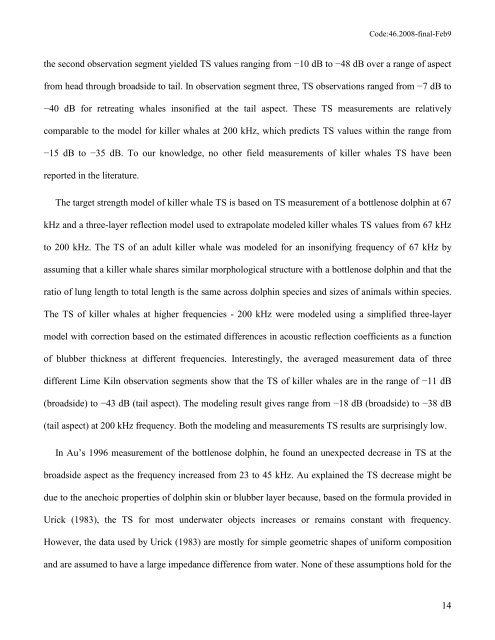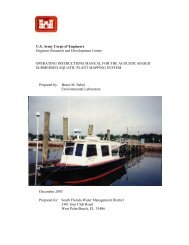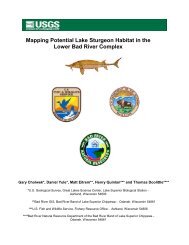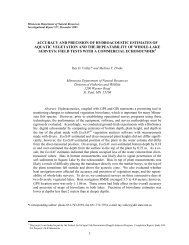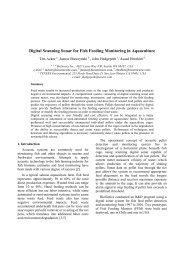Target Strength of Southern Resident Killer Whales ... - BioSonics, Inc
Target Strength of Southern Resident Killer Whales ... - BioSonics, Inc
Target Strength of Southern Resident Killer Whales ... - BioSonics, Inc
You also want an ePaper? Increase the reach of your titles
YUMPU automatically turns print PDFs into web optimized ePapers that Google loves.
Code:46.2008-final-Feb9<br />
the second observation segment yielded TS values ranging from −10 dB to −48 dB over a range <strong>of</strong> aspect<br />
from head through broadside to tail. In observation segment three, TS observations ranged from −7 dB to<br />
−40 dB for retreating whales insonified at the tail aspect. These TS measurements are relatively<br />
comparable to the model for killer whales at 200 kHz, which predicts TS values within the range from<br />
−15 dB to −35 dB. To our knowledge, no other field measurements <strong>of</strong> killer whales TS have been<br />
reported in the literature.<br />
The target strength model <strong>of</strong> killer whale TS is based on TS measurement <strong>of</strong> a bottlenose dolphin at 67<br />
kHz and a three-layer reflection model used to extrapolate modeled killer whales TS values from 67 kHz<br />
to 200 kHz. The TS <strong>of</strong> an adult killer whale was modeled for an insonifying frequency <strong>of</strong> 67 kHz by<br />
assuming that a killer whale shares similar morphological structure with a bottlenose dolphin and that the<br />
ratio <strong>of</strong> lung length to total length is the same across dolphin species and sizes <strong>of</strong> animals within species.<br />
The TS <strong>of</strong> killer whales at higher frequencies - 200 kHz were modeled using a simplified three-layer<br />
model with correction based on the estimated differences in acoustic reflection coefficients as a function<br />
<strong>of</strong> blubber thickness at different frequencies. Interestingly, the averaged measurement data <strong>of</strong> three<br />
different Lime Kiln observation segments show that the TS <strong>of</strong> killer whales are in the range <strong>of</strong> −11 dB<br />
(broadside) to −43 dB (tail aspect). The modeling result gives range from −18 dB (broadside) to −38 dB<br />
(tail aspect) at 200 kHz frequency. Both the modeling and measurements TS results are surprisingly low.<br />
In Au’s 1996 measurement <strong>of</strong> the bottlenose dolphin, he found an unexpected decrease in TS at the<br />
broadside aspect as the frequency increased from 23 to 45 kHz. Au explained the TS decrease might be<br />
due to the anechoic properties <strong>of</strong> dolphin skin or blubber layer because, based on the formula provided in<br />
Urick (1983), the TS for most underwater objects increases or remains constant with frequency.<br />
However, the data used by Urick (1983) are mostly for simple geometric shapes <strong>of</strong> uniform composition<br />
and are assumed to have a large impedance difference from water. None <strong>of</strong> these assumptions hold for the<br />
14


